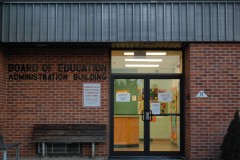Brick Township’s Board of Education is scheduled to hold a hearing on its 2015-16 school year operating budget this week before taking a vote on adoption of the spending plan.
The budget includes a 0.9 percent tax increase, well below the state’s 2 percent cap on expenditures and tax levy increases. The 2015-16 budget, as it appears on an agenda for Thursday’s board meeting, is $146,930,267 supported by a $100,000,721 tax levy. The levy is the same as that which appears on the tentative budget which was introduced last month.
The primary driver of the increase in the tax levy this year is the district’s debt service, which totals $2,688,428. Of that amount, $2,378,131 will be funded through property taxes.
|
|
The budget rose from last year; the 2014-15 school year budget totaled $146,520,788, supported by a $99,113,095 tax levy.
Though Brick’s tax burden is below the state average, New Jersey residents as a whole pay the highest property taxes in the nation – often propelled upward by the burden local residents must shoulder to fund their school systems. Brick will receive $35,938,828 in state aid for the 2015-16 school year, the same amount the district received for the current school year.
Often criticized by suburban taxpayers, New Jersey’s funding formula provides the majority of its education funding to 31 mainly urban, low-income districts, formerly known as “Abbott” districts after the series of Supreme Court decisions bearing that name. A lack of state aid means local taxpayers must fund more of their districts’ budgets, leading to higher property tax levies given a lesser amount of assistance from the state. In the state’s proposed 2015-16 budget, about 65 percent of the state’s total educational funding is provided to those districts, out of 590 total.

Advertisement

Police, Fire & Courts
Teacher From Brick, 36, Charged With Carrying on Affair With Student
Brick Life
Adult Autism Transition

Police, Fire & Courts
Teacher From Brick Charged in Another Sex Affair With Student









